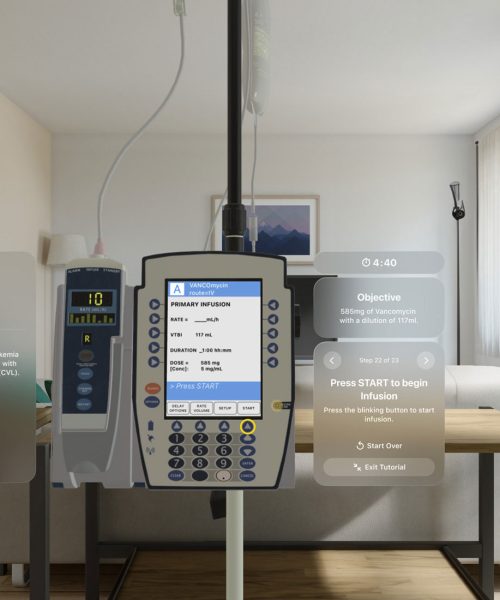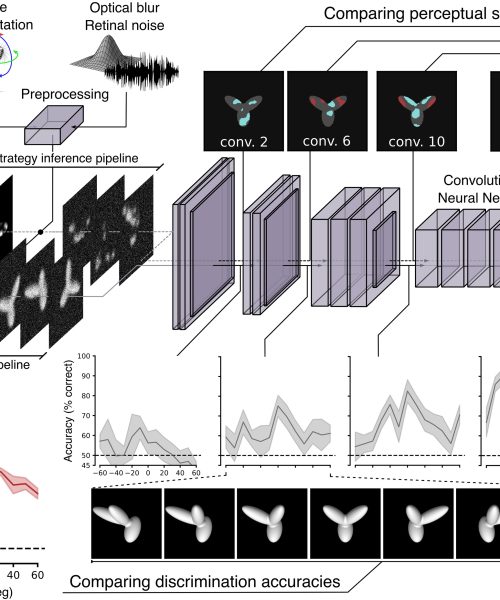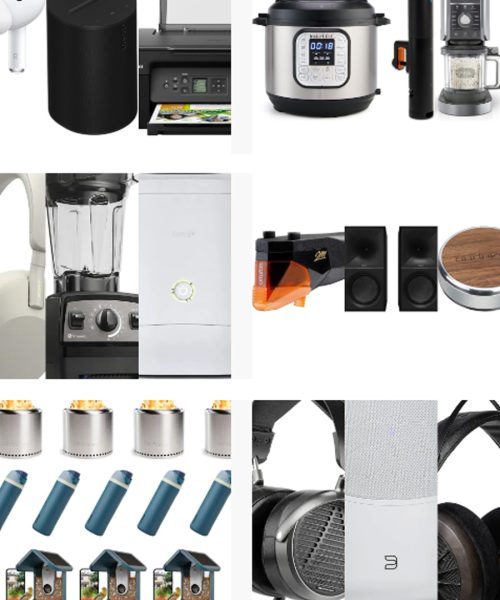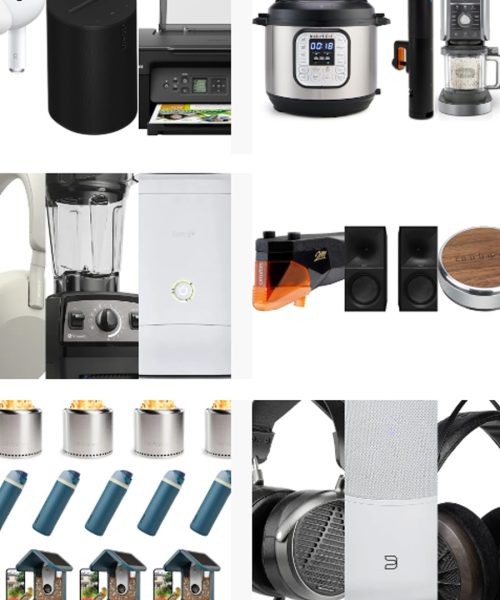We may earn revenue from the products available on this page and participate in affiliate programs. Learn more ›
Had you asked me at the beginning of 2024 what our best gadgets list would look like, I’d have guessed it would be filled with quirky AI-driven devices like the rabbit R1 or the Humane Ai Pin. “Now with AI” is a phrase that has dominated consumer electronics in the 2020s. These devices promised unadulterated access to the power of neural networks in ways that would seamlessly integrate into our lives without relying on phones or smart fridges. Then, the devices came out. The software is slow and buggy, and the hardware is clunky. Maybe the stand-alone AI device will still have its year, and we’ll look back and chuckle at these humble beginnings. In reality, 2024’s big breakthrough came from Apple in the form of its long-rumored Vision Pro headset. The device has its own hurdles to clear, but after just a few minutes of using it, it was clear that it’s something different, important, and honestly pretty amazing. The list also includes Sony’s innovative pro-grade camera, the most accessible drone we’ve ever used, and a no-fun phone—no fun in a good way, of course.
(Editor’s Note: This is a section from Popular Science’s 37th annual Best of What’s New awards. Be sure to read the full list of the 50 greatest innovations of 2024.)
Innovation of the Year
Vision Pro from Apple: A new dimension for augmented reality
Credible rumors of Apple’s VR bounced around the gadget blogs and tech sites for nearly a decade. It was consumer tech’s sasquatch in that people claimed to have seen it, but no one knew if it even existed. Then, the Vision Pro emerged from the proverbial forest in February with a surprising design and a massive $3,500 price tag. It also came toting a new R-series chip and a dedicated OS meant for spatial computing.
From a hardware perspective, this headset offers a 23-million-pixel screen, which dishes out more than 4K quality to each eye. It’s a true AR device, so external cameras pump a real-time view of the outside world into the display. Virtual displays, AR game boards, and other digital artifacts integrate seamlessly into your view of the real world. It’s actually jarring to take the headset off and see the real world free of floating UI. There are no controllers to use, buttons to press, or other obstacles between a user and the augmented space.
While AR headsets have existed before, this one gets our award because of how much potential it shows. It’s part of Apple’s overall hardware plan. The new iPhone cameras have a specific arrangement to shoot spatial video for consumption in AR. Familiar apps can offer augmented experiences specifically meant for headsets. We expect the next version of the hardware will skip the creepy image of your eyes that shows up on the exterior screen. Still, we’re curious to see what Apple does next, because a consumer-friendly price on an experience like this could be a true game changer.
A9 III from Sony: The first consumer mirrorless camera to eradicate wiggly images
Take a photo or video of a very fast-moving object with a typical digital camera (including the one in your smartphone), and there’s a chance you’ll notice the dreaded wobble effect. Digital camera sensors don’t capture every pixel at the same time; rather, they scan horizontal rows in sequence, which can cause fast-moving objects to look warped or distorted. Sony’s A9 III employs a global shutter, which means it fires every pixel simultaneously. As a result, it can capture images at shutter speeds up to 1/80,000th of a second, without distorting objects in the frame. The company achieves this with a newly designed stacked sensor, which means the same chip that captures the light also has computing hardware built into it. Consequently, it can operate faster than a typical camera system since everything is integrated together. The speed requires some trade-offs, like slightly noisier images when shooting in low light, but that’s a small price to pay for the fastest consumer camera on the market.
DJI Neo: A sub-$200 drone that isn’t a toy
Most cheap drones are little more than toys. They offer lousy cameras, barebones (if any) flight sensors, laggy controls, and cheap parts. DJI’s Neo drone weighs just 135 grams (well under the limit that would require registration with the FAA before flight) and can take off from a pilot’s palm. It takes commands from a smartphone app via Wi-Fi, which makes it accessible for super-green amateur pilots, but it’s also compatible with DJI controllers for upgrading down the line. The drone can automatically track and follow a subject or perform many pre-programmed flight paths like much bigger and more expensive models. The Neo feels like a real drone and not a toy. We recommend getting extra batteries if you buy one yourself—each cell only realistically gets you 15 minutes of flight time—but this is a big deal for content creators who want to shoot aerial 4K before those brand deal dollars start pouring in.
Palma by BOOX: An e-ink phone that’s no-fun in a good way
Smartphones are too much fun. Those glowing, brightly colored screens lather our brains in dopamine, soak up our free time, and make us painfully aware of things like The Rizzler. The BOOX Palma attempts to remedy those issues with its 6.13-inch e-ink display. It’s a monochrome screen that refreshes slowly like an e-reader. It technically runs full Android but won’t allow you to doom scroll. Instead, it encourages users to navigate essential apps and information by creating simple widgets. Text looks fantastic on the 1,200 dpi screen, and it’s a great way to consume information in a much healthier way. It won’t replace your phone in all situations, but it’s great for weaning yourself off those late-night TikTok marathons.
Snapdragon X series chips by Qualcomm: An AI-powered brain built for Windows computers
You’re probably familiar with the big chip makers that power almost every laptop. You choose from AMD, Intel, or Apple. This year, Qualcomm introduced its Snapdragon X Elite chip, which is meant to extend the company’s approach to mobile hardware into full-fledged PCs and powerful tablets like the Microsoft Surface Pro. Both Intel and AMD split their chip’s cores into high-power and efficiency categories to balance overall performance with battery life. Qualcomm’s chips, however, designate all of their cores as “high performance.” That comes with a promise of long battery life without serious drops in performance when unplugged from a power adapter. The first generation of Copilot+ PCs have largely focused on thinness and performance, but we’re hopeful this new chip will be the key to all the weird form factor Windows PCs we’ve been wishing for.











